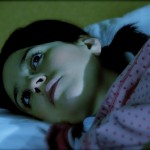
Just before I get started on my first blog I must declare that I am a current student at the same institution as the authors of this paper that I am writing about. I have had no involvement in this study and have not worked with any of the authors on other research projects.
In my first blog for the Mental Elf I am reporting on a cohort study investigating the links between childhood sleep disturbance and risk of psychotic experiences at 18 (Thompson et al, 2015).
There is an increasing evidence base for the presence of psychotic experiences in non-clinical populations and while the relationship between established risk factors for schizophrenia and psychotic experiences may not be clear, sleep disturbances during the pro-dromal phase of schizophrenia is one of the commonest symptoms retrospectively reported by patients (Yung et al, 1996) and has also been shown to have value in predicting development of psychosis in high risk individuals (Ruhrmann et al, 2010).
The authors have previously demonstrated a cross-sectional relationship between the presence of nightmares and night terrors and psychotic experiences at the age of 12 (Fischer et al, 2014) and with the current study aimed to examine the longitudinal nature of this relationship.
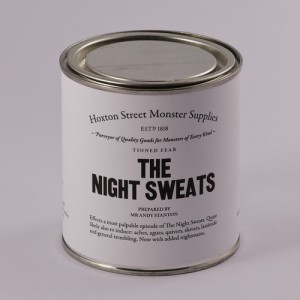
This cohort study looked at the longitudinal relationship between childhood sleep disturbances and psychotic symptoms.
Methods
The authors used data from the Avon Longitudinal Study of Parents and Children (ALSPAC), a birth cohort study in the UK. This study is based on data from 4,060 children who completed the Psychosis-Like Symptoms semi structured interview (PLIKSi) at the age of 12 and 18.
The PLIKSi is a semi-structured face to face interview (Horwood et al, 2008; Zammit et al, 2013) designed to elicit key psychotic experiences including hallucinations, delusions and experiences of thought interference. Only psychotic experiences that were not attributed to falling asleep (hypnagogic), waking up (hypnopompic) or fever were included.
The authors defined the outcome variable in this study as psychotic experiences at 18 reported using the PLIKSi. Using data from PLIKSi responses at age 12 the persistence of psychotic experiences was also determined.
Two predictor variables were used in this study:
- The first was the presence of persistent nightmares during preschool and school determined by postal questionnaires completed by mothers at 6 time points between ages 2.5-9 years
- The second was the presence and frequency of sleeping problems at 12 years which was assessed by face to face semi-structured interviews with the subjects.
Results
- Persistent childhood nightmares and any parasomnia, nightmares and night terrors at age 12 were associated with psychotic experiences at age 18
- However, once psychotic experiences at age 12 were controlled for, the associations for persistent childhood nightmares and night terrors were reduced and failed to reach significance
- No association was found for sleepwalking at age 12
- Nightmares and any parasomnias at age 12 were significantly associated with new incidences of psychotic experiences at age 18
- All the parasomnias were associated with remitted psychotic experiences
- Persistent childhood nightmares, nightmares and night terrors at age 12 and any parasomnia at age 12 were significantly associated with persistent psychotic experiences, but sleep walking was not.
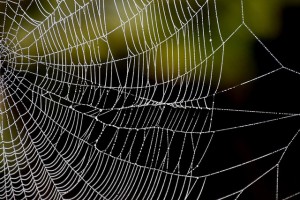
Multiple associations were found between nightmares and parasomnias and psychotic experiences, but many of the associations failed to reach significance when adjusted for confounders.
Conclusions
This study confirms the authors previous finding (Fischer et al, 2014) of a cross sectional relationship between nightmares and night terrors and psychotic experiences at age 12 but not sleepwalking.
It also demonstrates that there is a longitudinal relationship between childhood nightmares and the development of psychotic symptoms at age 18 years, although the longitudinal association is weaker.
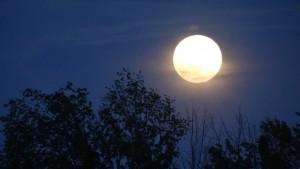
The authors suggest that “the presence of nightmares might be an early risk indicator for psychosis”.
Strengths and limitations
The authors have presented novel longitudinal findings on this subject which is a great addition to the cross sectional data available previously. The use of appropriate and rigorous research tools, the large sample size and the ability to adjust for a number of potential confounders (such as IQ, Family adversity, Psychiatric disorders including anxiety and depression, child abuse and enuresis) are all strengths of this study.
The authors commented on a variety of weaknesses that they themselves identified. Some of which I wanted to comment further on. Although the authors excluded psychotic symptoms occurring during hypnagogic or hypnopompic states and during fever, they could not exclude psychotic experiences at 18 attributed to substance use, or the presence of parasomnias that may mimic nightmares/night terrors such as obstructive sleep apnea and nocturnal epilepsy. They also did not exclude individuals with organic conditions that could cause parasomnias. Although these numbers are likely to be low this does negatively affect the interpretation and the strength of the results. In addition, the possible effect that subjects who had other sleep disorders or organic conditions would be more likely to experience or report sleep disturbances was not discussed by the authors.
The authors also commented that the lack of insomnia or sleep quality data in the cohort impaired their ability to compare their own results to those of Koffel and Watson (2009) who reported associations between unusual sleeping problems and schizotypy but not for other sleep disturbances such as insomnia, lassitude/fatigue. However, I believe the lack of this data goes beyond comparing to existing literature. A satisfactory insomnia rating, sleep quality or duration data should have been included as an important confounder and would have greatly strengthened the data presented here.
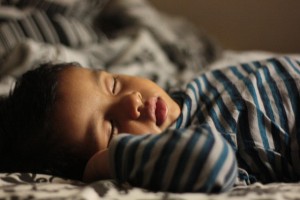
What other effects do nightmares and parasomnias have on sleep that could explain the association with future psychotic symptoms?
Summary
- Data from this large UK birth cohort suggest that those who have childhood experiences of nightmares and night terrors at age 12 are more likely to report psychotic experiences at age 18
- The clinical relevance of these findings may relate to the way in which early nightmares and night terrors are viewed and addressed by carers and indeed professionals, particularly in individuals with other risk factors such as family psychiatric history or previous exposure to traumatic events
- Further research is required to investigate the use of already existing evidence-based psychological treatments of nightmares such as image rehearsal therapy in these at risk patient groups
- Further research is also needed to understand the mechanisms that underlie the relationship between different risk factors for psychosis including sleep disturbances.
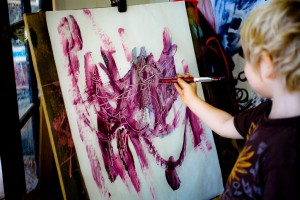
Should sleep disturbances be used to identify high risk individuals? Further evidence is needed to inform clinical practice in this field.
Links
Primary paper
Thompson A, Lereya ST, Lewis G, et al (2015) Childhood sleep disturbance and risk of psychotic experiences at 18: UK birth cohort. Br J Psychiatry. 2015 Jul;207(1):23-9
Other references
Yung AR, McGorry PD (1996) The initial prodrome in psychosis: descriptive and qualitative aspects. Aust N Z J Psychiatry 1996; 30: 587–99 (PubMed abstract)
Ruhrmann S, Schultze-Lutter F, Salokangas RK, et al. (2010) Prediction of psychosis in adolescents and young adults at high risk: results from the prospective European prediction of psychosis study. Arch Gen Psychiatry 2010; 67: 241–51.
Fisher H, Lereya ST, Thompson A et al (2014) Childhood parasomnias and psychotic experiences at age 12 in a UK birth cohort. Sleep 2014; 37: 475–82.
Koffel E, Watson D (2009) Unusual sleep experiences, dissociation, and schizotypy: evidence for a common domain. Clin Psychol Rev 2009; 29: 548–59.
Horwood J, Salvi G, Thomas K et al. (2008) IQ and non-clinical psychotic symptoms in 12-year-olds: results from the ALSPAC birth cohort. Br J Psychiatry 2008; 193: 185–91.
Zammit S, Kounali D, Cannon M et al (2013) Psychotic experiences and psychotic disorders at age 18 in relation to psychotic experiences at age 12 in a longitudinal population-based cohort study. Am J Psychiatry 2013; 170: 742–50.

Childhood sleep disturbance and risk of psychotic experiences https://t.co/AVGFA9cN3n #MentalHealth https://t.co/RzWxhT1sSl
RT iVivekMisra Childhood sleep disturbance and risk of psychotic experiences https://t.co/5Xfcz2B21R #MentalHealth https://t.co/qES3sdgHmi
Today @StarryJojo on UK birth cohort study of childhood sleep disturbance & risk of psychotic experiences at 18 https://t.co/DMMn4JNFJX
Childhood sleep disturbance and risk of psychotic experiences https://t.co/DBczbxhCpu
That was an interesting article (https://t.co/83kAXnhD2K) #psychosis @StarryJojo @Mental_Elf @matteo__cella https://t.co/MDwZhERzwN
Glad you liked the article-it was a really interesting paper for my first blog @djrobotham @Mental_Elf @matteo__cella
Childhood #sleep disturbance and risk of psychotic experiences https://t.co/IkFn0KjbY9 @Mental_Elf review of a #cohortstudy. #psychosis
“The presence of nightmares might be an early risk indicator for psychosis” says @HelenLFisher Our blog of the paper https://t.co/DMMn4JNFJX
The presence of nightmares might be an early risk indicator for psychosis.
https://t.co/uObs4Cj0ig
Should sleep disturbances be used to identify young people at high risk of psychosis? https://t.co/DMMn4JNFJX
UK cohort study looks at longitudinal relationship between childhood sleep disturbances & psychotic symptoms https://t.co/DMMn4JNFJX
Don’t miss: Childhood sleep disturbance and risk of psychotic experiences https://t.co/DMMn4JNFJX #EBP
Evening @HelenLFisher Any thoughts on @StarryJojo’s blog about your paper? https://t.co/DMMn4JNFJX
@Mental_Elf @StarryJojo Great summary and very balanced appraisal – many thanks! Shame we didn’t have other sleep data available to include
Thanks @HelenLFisher @Mental_Elf a balance when using data from a large cohort with other + points-hopefully a topic for further research
Nightmares, parasomnias & psychotic experiences. What’s the link? https://t.co/DMMn4JNFJX
Childhood sleep disturbance and risk of psychotic experiences https://t.co/25p6KIUknu #psychosis
Childhood sleep disturbance and risk of psychotic experiences https://t.co/fMAOfBF3Sn